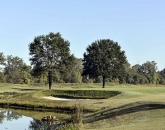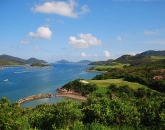
The sustainability angle is perhaps most obvious in terms of the bunkering. Many modern courses are characterised by great swathes of sand that appear on nearly every hole, which is usually to lend visual splendour if little else. That is certainly not the case at Laguna Phuket, where the course’s original 99 bunkers have been slashed in number by nearly two thirds to 37. That might not sound a lot but the point is that each fulfills a role. They don’t appear randomly; they have been used sparingly but to sound strategic effect.
Other, less noticeable changes to the course have added benefits to both the environment and the playing conditions. A new irrigation system has cut the number of sprinkler heads down from 1,400 to 800 and over 15km of drainage has been added. One of the effects of the latter means that play is far less likely to be halted during occasions of heavy rain.
A lot of good things will continue to be said of the results of Jansen’s work, and rightly so, but the man himself claims he is just as proud of the way the work was done.
"We essentially built the golf course using in-house staff,” says Jansen. “We taught them how to build greens and bunkers, install drainage and use survey gear. Many of the existing staff were then asked to manage small teams themselves, which meant they had to take on more responsibility. But this was paramount for getting the work done on time to budget.
"This is a great investment in the current staff and something that I don’t see enough of in Asia - or indeed the rest of the world.”
Amen to that.
Pages
Click here to see the published article.











